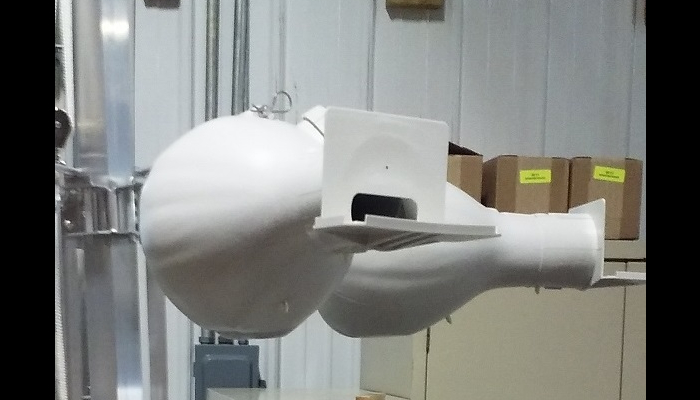The Purple People…uh…Tenant

“I had a large and commodious box built and fixed on a pole, for the reception of Martins, in an enclosure near my house, where for some years several pairs had reared their young.” -John James Audubon
I confess have not devoted much thought to Purple Martins, those large, glossy-purple swallows that make their homes in the white synthetic gourds dangling from poles in large open fields near farmhouses and other human habitations. I know generally what they look like, and that they eat bugs, but beyond that they and I have not crossed paths (though I did see a distant dark blur that I assume was a Purple Martin at the fairgrounds, perched on a structure of the aforementioned synthetic gourds).
There is, apparently, a small and devoted culture of Purple Martin landlords across the eastern US, dedicated not only to providing housing for these beleaguered birds but also monitoring and assisting them throughout the breeding season. This weekend, I had the pleasure of joining many of these people from around the midwest as they turned out for the annual Purple Martin Workshop near Kalona (scheduled to precede the birds’ arrival from their wintering grounds in South America). Alas, Purple Martins in our area are entirely dependent upon these human-built nests and have been for at least a century, perhaps longer (many Martin histories will describe Native Americans providing homes from hollowed-out gourds for the birds).
Fortunately for the Purple Martins, people since at least the early 18th century have been building homes for these birds, perhaps as a convenient method of securing insect control. Formerly cavity nesters that settled for second-hand woodpecker nests, Purple Martins quickly lost out in the birdie housing market due to a combination of low supply (snags and trees in favorable locations became hard to come by as people built their way across the continent) and intense demand (particularly from human-introduced toughs like starlings and house sparrows, which can violently outcompete many of our native cavity nesters).
Now, the Purple Martin relies entirely on humans to avoid extinction. They are particular about the siting of their homes: close to buildings but not too close; and a good distance away from trees. We must provide suitable homes, defend the homes from invasion by enemies both foreign and domestic (native birds like tree swallows may also attempt to make themselves comfortable in Purple Martin houses), and monitor the nests regularly to assist with managing mites and other pests to give the young Martins the best chance to survive and return next spring.
That is where the cadre of landlords comes in, these devoted souls who commit to checking up on their tenants every week or so throughout the breeding season (there is an interesting and longstanding relationship between Purple Martin houses and Amish/Mennonite farms). Like the volunteer bluebird house monitors, their job is a combination of caretaking and documentation, with a system of mentoring and support.
It is a worthy effort to help ensure that these spectacular birds are able to survive in a world that has changed out from under their feet in an evolutionary eyeblink.
Sources/Resources:
John J. Audubon’s Birds of America: Purple Martin
All About Birds: Purple Martin (Cornell Lab of Ornithology)
Purple Martins: The Bird That Relies on Human-Built Nests
Originally published in Sycamore Greenway Friends.
Tags: bird habitat, Melissa Serenda, Purple Martin

